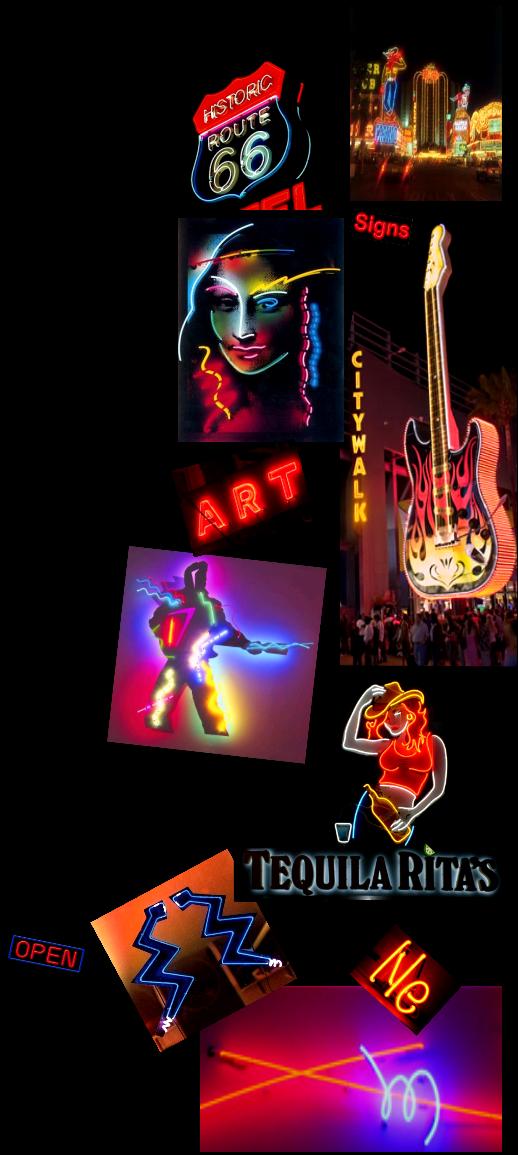 |
||

60’s, 70’s 80’s... Neon lights Dim - Just a little
Although neon was still used in electric sign manufacturing,
“exposed” neon became less popular for most of the U.S.,
and fluorescent sign cabinets with translucent plastic faces
becomes a low maintenance alternative to neon signs.The years of elaborate exposed neon displays faded out of style in early 60's. That sharp decline in the use of neon from the
60’s thru the 80s’s seperates the pre 60’s style of design
that dominated our cities, buildings and signs for decades.
Today Neon Returns / Evolves as Art and Signage
Thanks to efforts to restore some of the historic
Architecture of the past, projects like the 1999 Route 66
Corridor Restoration Act, has helped in preserving some of
the iconic Retro-Neon Signs and monuments of the past.
More recently neon (and argon), has had a bit of a revival.
Elaborate neon displays and increased use in sign design, neon
has become more common in retail design, and outdoor as
decorative architectural enhancements. Just as important as
the neon revival in the sign industry is neon’s surge as an Art
form, known simply as “Neon Art”.
In 1981, the Museum of Neon Art (MONA) in
Los Angeles became the first museum in the world
to specialize in works of Neon Art.
The interest in Retro-design has given the nostalgic
medium of neon some prominence. The versatile
capabilities of neon, its large palette of colors, and
Its unique luminescent qualities keep neon as an important
element in Electric Sign Industry and the Neon Art World.
Recent developments in simulated neon using colored
LED’s and colored plastic tubes has created some relatively
close simulations, but have yet to achieve the brightness
and the unique qualities of the neon and argon tubes.
Like other art forms, neon was first a scientific invention.
A culmination of many Physicists, Chemists, Engineers and
Craftsmen. Thru the years neon has been adopted, and adapted
by sign designers, artists, advertisers, architects and engineers
evolving the medium of neon for these past decades.
Neon remains a visual landmark through out our city’s, on
our buildings, in our widows, and displayed in our art
galleries and will likely remain an art form and an
advertising tool for years to come.
*Tid Bits
*Neon (Ne) (pronounced /nee-on) is the chemical element
that has the symbol Ne, and the atomic number of 10.
What is Neon, what’s not.
*The Neon (gas) tube generally only Illuminates red, orange, and amber.
Most other colored tubes you see in signs and art are usually“Argon”
gas filled tubes not “neon”. However, most everyone refers to the
neon and the argon tubes, simply as - Neon. There are now more
than 150 colors that can be produced using neon and argon,
< Previous 1 2 3

